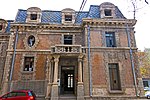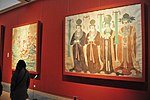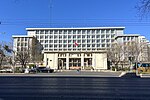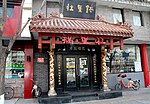Dongsi Subdistrict, Beijing

Dongsi (simplified Chinese: 东四; traditional Chinese: 東四; pinyin: Dōngsì,lit. "Eastern Four" or "Eastern Quadrangle") is the name of an intersection and surrounding neighborhood in Dongcheng District, Beijing. Dongsi, at the intersection of what is now Dongsi Avenues North, South and West and Chaoyangmen Inner Street, dates to the Yuan dynasty. The intersection is named after four paifangs or Chinese sign gates that marked the location and is known in Chinese as the Eastern Four Sign Gates or "Eastern Four" for short. Directly due west in Xicheng District, another intersection with four sign gates is called Xisi or the "Western Four".The sign gates at Dongsi and Xisi were removed in 1958 but the location names remain. Today, the Dongsi Station on Lines 5 and 6 of the Beijing Subway is located underneath the intersection. Beijing Bus 106, 110, 116, 684, and 夜10 stop south of the intersection. Bus 58, 101, 109, 112, 420, and 夜13 stop east of the intersection. Dongsi is known for the Longfusi Snack Street where traditional restaurants such as Baikuilaohao serve Beijing snack cuisine. The Dongsi Mosque, founded in 1356 and rebuilt in 1447, is located just south of the intersection.
Excerpt from the Wikipedia article Dongsi Subdistrict, Beijing (License: CC BY-SA 3.0, Authors, Images).Dongsi Subdistrict, Beijing
Dongsi 6th Alley, Dongcheng District Dongsi (首都功能核心区)
Geographical coordinates (GPS) Address Nearby Places Show on map
Geographical coordinates (GPS)
| Latitude | Longitude |
|---|---|
| N 39.928888888889 ° | E 116.4175 ° |
Address
东四六条
Dongsi 6th Alley
100010 Dongcheng District, Dongsi (首都功能核心区)
Beijing, China
Open on Google Maps











